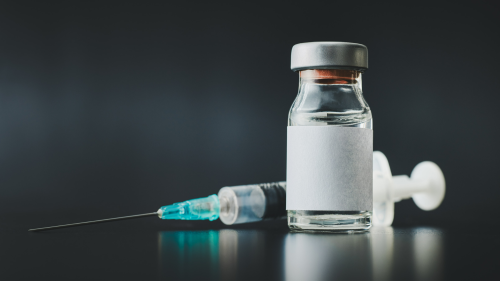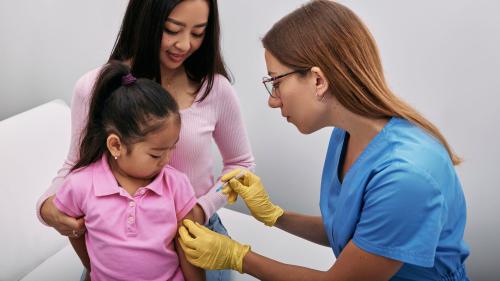
-
Understanding primary immunodeficiency (PI)

Understanding PI
The more you understand about primary immunodeficiency (PI), the better you can live with the disease or support others in your life with PI. Learn more about PI, including the various diagnoses and treatment options.
-
Living with PI
-
Addressing mental health
-
Explaining your diagnosis
- General care
- Get support
- For parents and guardians
-
Managing workplace issues
- Navigating insurance
-
Traveling safely

Living with PI
Living with primary immunodeficiency (PI) can be challenging, but you’re not alone—many people with PI lead full and active lives. With the right support and resources, you can, too.
-
Addressing mental health
-
Get involved

Get involved
Be a hero for those with PI. Change lives by promoting primary immunodeficiency (PI) awareness and taking action in your community through advocacy, donating, volunteering, or fundraising.
-
Advancing research and clinical care
-
Research Grant Program
-
Consulting immunologist
-
Diagnosing PI
-
Getting prior authorization
-
Clinician education
-
Survey research
-
Participating in clinical trials

Advancing research and clinical care
Whether you’re a clinician, researcher, or an individual with primary immunodeficiency (PI), IDF has resources to help you advance the field. Get details on surveys, grants, and clinical trials.
-
Research Grant Program
Renee Hilgren’s son was first diagnosed with primary immunodeficiency (PI) in 1992 when he was three years old. Back then, his symptoms didn’t fit neatly with any of the known PI diagnoses. In fact, his specific condition hadn’t been discovered yet. It wouldn’t appear in the medical literature until 2013 when researchers at the National Institutes of Health described an ultrarare PI called PASLI disease or activated PI3K delta syndrome (APDS).
Now, less than a decade after APDS’ discovery, it’s getting its very own diagnostic code. Called an ICD-10 code, which stands for the International Statistical Classification of Diseases and Related Health Problems, 10th Edition, it’s a milestone that may not sound exciting but heralds important recognition for the disorder.
From health agencies to doctor’s offices to insurance companies, ICD-10 codes are a critical part of the medical system’s infrastructure. They allow different entities to communicate patients’ conditions accurately and consistently. As a result, they underpin everything from medical billing to public health statistics. In fact, these codes are so important that the EveryLife Foundation for Rare Diseases developed a toolkit to help rare disease advocates navigate the process of getting an ICD-10 code for their condition. As Immune Deficiency Foundation vice president of advocacy Lynn Albizo put it, having a specific code is like “ok, we have a name for this.”
The APDS ICD-10 code, D81.82, goes into effect on October 1, 2022. Over time, the new code will allow for dedicated tracking of APDS patients, systematic data collection on treatments and outcomes, and easier communication between doctors’ offices and insurance providers. The code may also raise awareness of APDS among healthcare providers who have patients like Hilgren’s son—with a primary immunodeficiency that doesn’t quite seem to fit other diagnoses.
Currently, APDS is considered an extremely rare PI, with an estimated prevalence of 1 in 1-2 million people. But because patients lack standardized notation of an APDS diagnosis in their electronic medical records, it’s hard to know for sure. “It seems rare now, but maybe there’s a lot more [APDS patients] out there than we think,” Hilgren commented.
Hilgren noted that genetic testing for APDS, which wasn’t available in 1992, ultimately led to her son’s definitive diagnosis in March 2021. He was 32 and suffering from aggressive lymphoma. Doctors began looking into his undefined PI when his cancer failed to respond to chemotherapy. He was ultimately treated with an allogeneic stem cell transplant and has been doing well since then.
In fact, APDS can easily be confused with other PIs like common variable immunodeficiency (CVID). It is a combined immunodeficiency, with symptoms that include frequent respiratory tract infections, chronic infection with certain viruses (for example, Epstein-Barr virus, cytomegalovirus, or herpes simplex virus), increased generation of white blood cells, an enlarged spleen or liver, and inflammation of the small intestines. But, these symptoms can vary widely from person to person.
Making and tracking diagnoses is not the only challenge with an ultrarare disease. APDS also lacks clinical care guidelines. Although case reports and medical reviews paint a picture of how patients have been cared for by individual clinicians, an ICD-10 code will allow the analysis of treatment and procedure codes from patient medical records. With this larger and more comprehensive picture, experts can evaluate and standardize care for the condition.
And insurers can in turn ensure that claims with the APDS ICD-10 code that match care guidelines are covered without extra, burdensome paperwork. Said Albizo, “In general, [a specific ICD-10 code] can remove barriers to coverage.”
Referring to her son’s longtime immunologist, who is now retired, Hilgren said “He always said that he could never put our son in a box. There was always something just a little different than the other PIs that were out there. If he only knew the journey and the genetic confirmation…I believe he’d be just over the moon with this, that his hunch was right.”
Learn more about activated PI3K-delta syndrome (APDS) in an upcoming IDF Lunch & Learn on August 24, 2022.
Related resources

Foundation to follow medical societies' vaccine schedules in light of ACIP hepatitis B decision

Update: ACIP meeting adds to COVID-19 vaccine confusion

Mother with specific antibody deficiency advocates for vaccines
Sign up for updates from IDF
Receive news and helpful resources to your cell phone or inbox. You can change or cancel your subscription at any time.





The Immune Deficiency Foundation improves the diagnosis, treatment, and quality of life for every person affected by primary immunodeficiency.
We foster a community that is connected, engaged, and empowered through advocacy, education, and research.
Combined Charity Campaign | CFC# 66309

